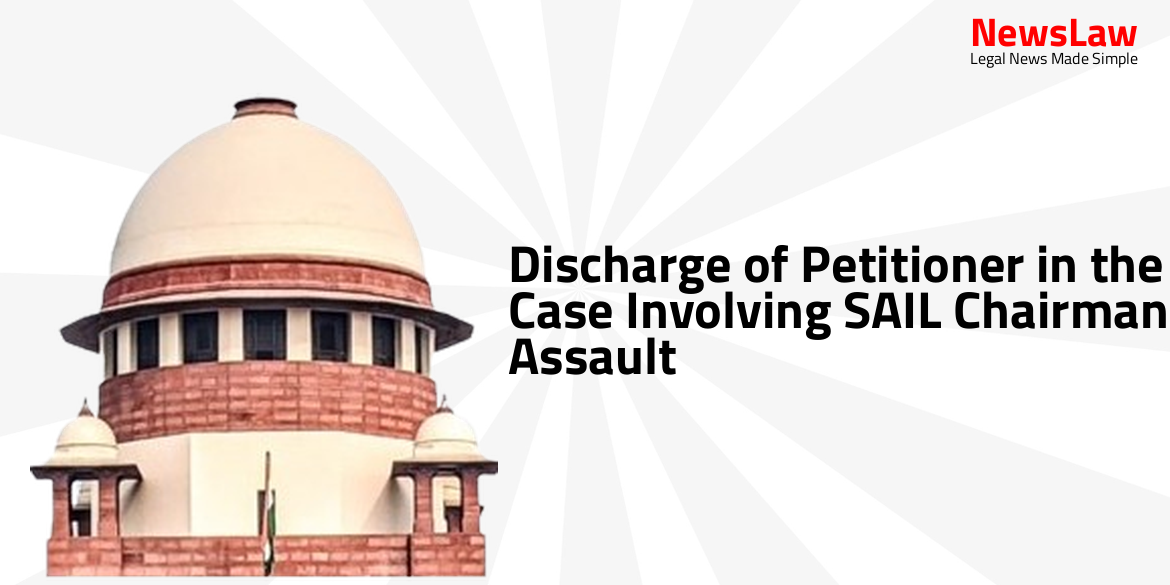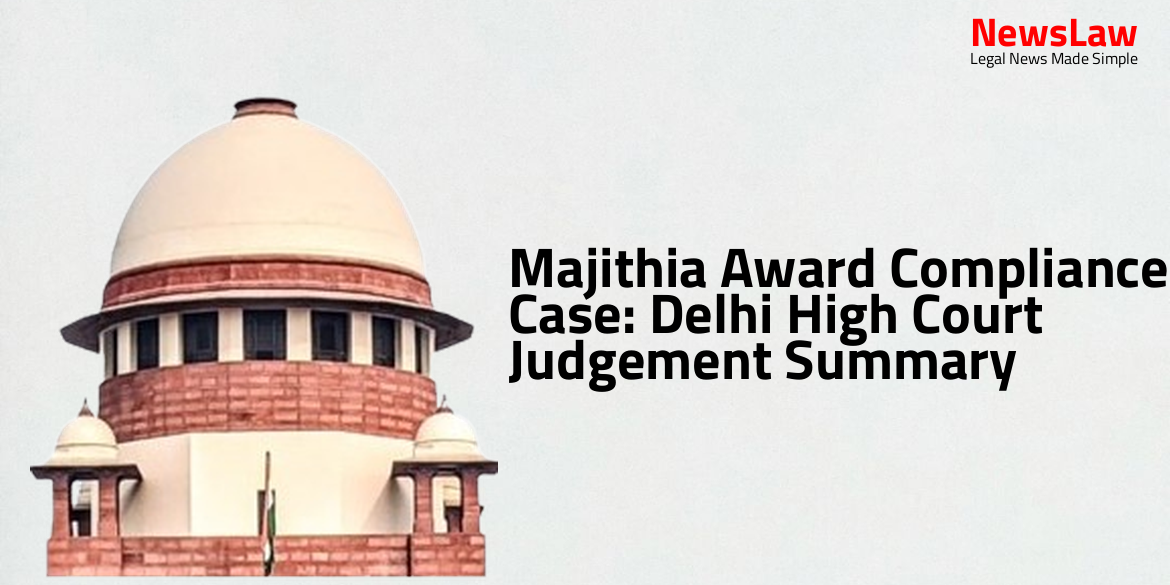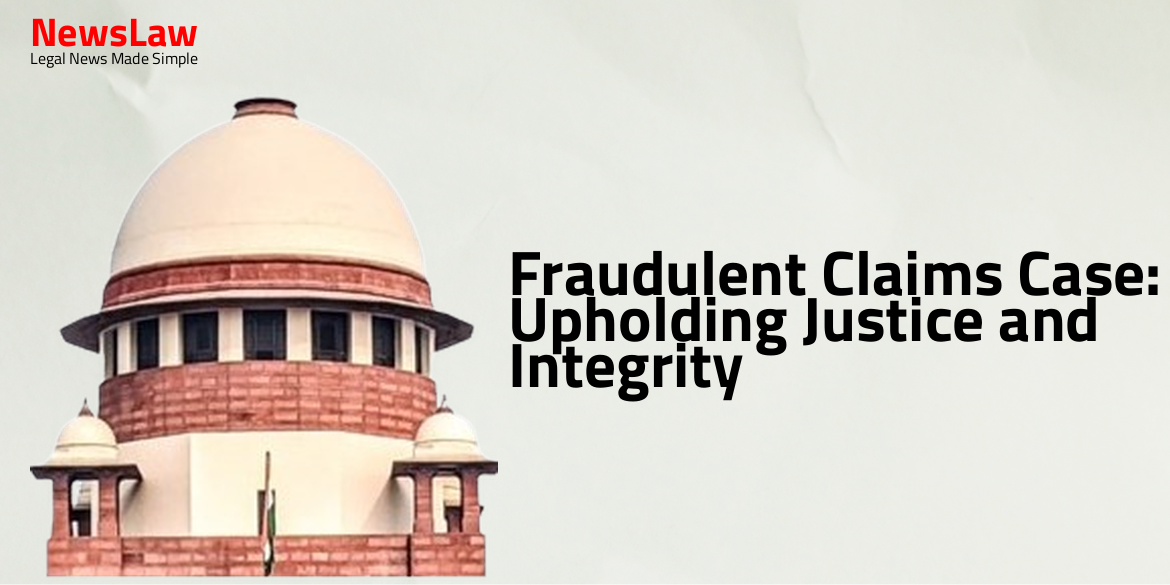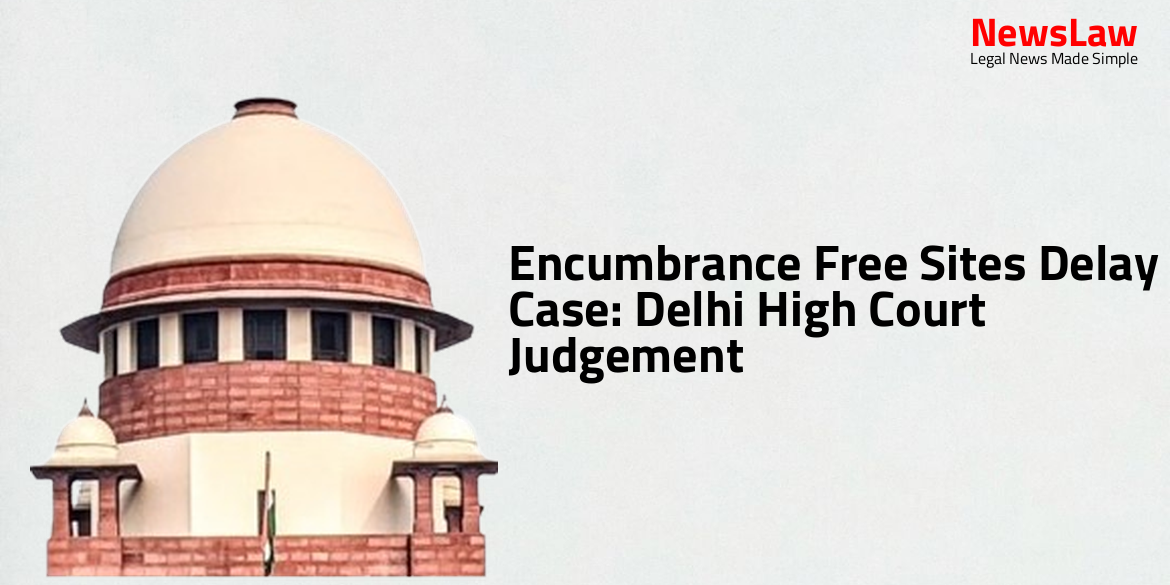A significant ruling by the Delhi High Court has resulted in the discharge of the petitioner in a case involving the assault on the Chairman of SAIL. The judgment follows a detailed analysis of the evidence and legal arguments presented in connection with the incident. Find out more about the key points discussed and the outcome of this case.
Facts
- Accused no. 4, accused no. 5, and accused no. 6 conducted a recce of the complainant’s route to work before the incident.
- Accused no. 3, accused no. 4, accused no. 5 (Satender @ Chhutku), and accused no. 6 (Sunil Kumar Balhera) were taken into judicial custody.
- Accused no. 1, accused no. 2, accused no. 3, and accused no. 4 followed the complainant’s car after a signal from accused no. 5 and accused no. 6.
- A paper cutter and iron rod were recovered from the spot on 08.08.2019.
- Accused Amarjeet physically assaulted the complainant with kicks and fists.
- The role of the present petitioner in the incident came to light through the arrest and disclosure statement of accused no. 6.
- The complainant, who was a Chairman in SAIL, was intercepted and assaulted by the accused at Kranti Marg.
- Police apprehended accused no. 1 and accused no. 2 at the spot while the other accused fled.
- Based on disclosure statements of accused no. 1 and accused no. 2, a conspiracy angle was suspected in the case.
- The investigation was transferred to STF/Crime Branch PS Hauz Khas, leading to a chargesheet under Sections 307/120-B/34 of the IPC and Section 25 of the Arms Act against the petitioner and other accused.
- The complainant identified accused Om Prakash as the one who injured him with an iron rod and accused Lalit as the one who tried to inflict sharp injuries with a paper cutter.
- The complainant was medically examined, and the FIR was lodged at PS Hauz Khas under Sections 307 and 34 of the IPC.
Arguments
- The arguments of the learned counsel for the State highlight the interpretation of the expression ‘discovery of fact’ in relation to Section 27 of the Evidence Act. It emphasizes that Section 27 can apply to the discovery of mental facts, not just physical objects, provided it confirms the truth of the information and was not previously known to the police.
- The State contends that there is enough material on record to frame charges against the accused persons, emphasizing the tacit understanding between conspirators in establishing criminal conspiracy.
- It is argued that the petitioner had no financial interest in the coal deal and that the allegations do not fit the categories identified in specific judgments referenced by the State.
- Multiple contradictions in the disclosure statements of co-accused persons are pointed out, questioning their reliability as sole evidence for framing charges.
- The application of Section 27 is debated, suggesting that solely relying on call detail records or a co-accused’s statement may not be sufficient to prove conspiracy or criminal involvement.
- The petitioner’s son’s involvement as an authorized signatory in the coal deal is highlighted to indicate lack of personal financial interest.
- The dispute between the petitioner and the complainant over coal quality and payment issues is mentioned as a possible motive, along with the contention that the alleged assault was premeditated.
- Challenges are raised regarding the admissibility and sufficiency of evidence, particularly concerning call detail records, disclosure statements, and the lack of witness depositions against the petitioner.
- Dispute arose from an agreement between SAIL (India) and Sonam Trading FZC (United Arab Emirates) referred to Arbitration in ICC Arbitration Case No 23597/PTA/HTG.
- Complainant had no role in the dispute as it had been referred to Arbitration.
- Assaulting the complainant would serve no purpose regarding the deal.
Analysis
- The disclosure statement made by the accused may lead to the discovery of a fact, which is a direct outcome of the information given.
- The information furnished by the accused should relate distinctly to the fact discovered for it to be admissible as evidence.
- The information must lead to the discovery of something new not previously known to the police.
- Statements by an accused that do not pertain to relevant facts but involve other accused are inadmissible under Section 27 against the latter.
- The fact discovered under Section 27 can include physical objects, the place of discovery, and the accused’s knowledge of the object or location.
- The mental element in relation to a fact discovered can also be considered within the scope of Section 27, not limited to just physical objects.
- The mere suspicion of an illegal act is not sufficient; there must be clear evidence of a meeting of minds for a criminal conspiracy to exist.
- The admissibility of evidence under Section 27 is limited to statements that can be used as evidence against the maker and not others.
- The conduct of the accused person is relevant under Section 8 of the Evidence Act if it influences or is influenced by a fact in issue.
- Phone call records between accused parties cannot solely form the basis for framing charges if disclosure statements are not admissible as evidence.
- In the analysis portion of the judgment, the court delves into the legal implications of Section 27 of the Indian Evidence Act.
- It highlights the requirement that a fact must be discovered which was exclusively known to the accused alone in order for a voluntary statement to be admissible.
- The court emphasizes that the admissibility of a statement under Section 27 is limited to the discovery of a physical fact and the knowledge related to that fact against the person making the statement.
- It discusses the need for a physical object to be produced or a place to be identified as a result of the information furnished by the accused for it to be admissible under Section 27.
- The analysis also touches upon the distinction between a material object and a mental fact in the context of Section 27.
- The court refers to relevant case laws and legal precedents to support its interpretation of Section 27 and the admissibility of statements made by accused individuals.
- It underscores that the discovery of a fact must relate to the commission of an offense and must be directly linked to the information provided by the accused.
- The court also explores the role of investigations in confirming the information given by the accused and the subsequent admissibility of such information as evidence.
- Section 162 CrPC prohibits the use of statements made to a police officer in an investigation as evidence against the accused, except for contradicting witnesses.
- Only information corroborated by evidence is considered relevant and admissible under Section 27.
- Physical objects may be recovered, but the context surrounding them may not be known to the investigating agency.
- Insufficient material on record for charges under Section 471 and 120-B of IPC
- No evidence to support grave suspicion for framing charges
- Decision to not proceed with trial based on lack of sufficient material
Decision
- Petitioner has been discharged
- The orders of 04.2023 have been set aside
- Any pending applications have been disposed of accordingly
- The petition has been allowed and disposed of accordingly
- The judgment will be uploaded on the website of the Court immediately
- A copy of the judgment will be sent to the Trial Court for information and compliance
Case Title: SH. ASHOK KUMAR SINGH Vs. STATE OF NCT OF DELHI & ANR. (2024:DHC:4509)
Case Number: CRL.REV.P.-745/2023



